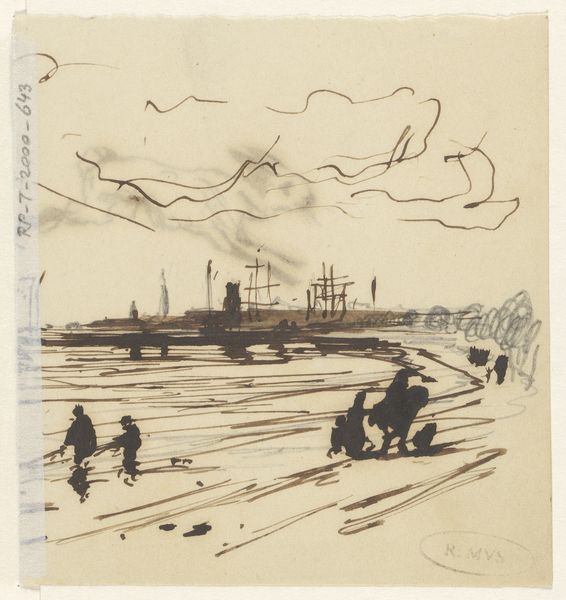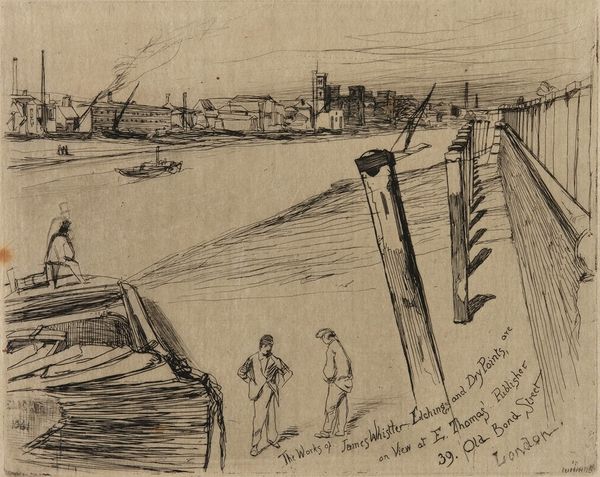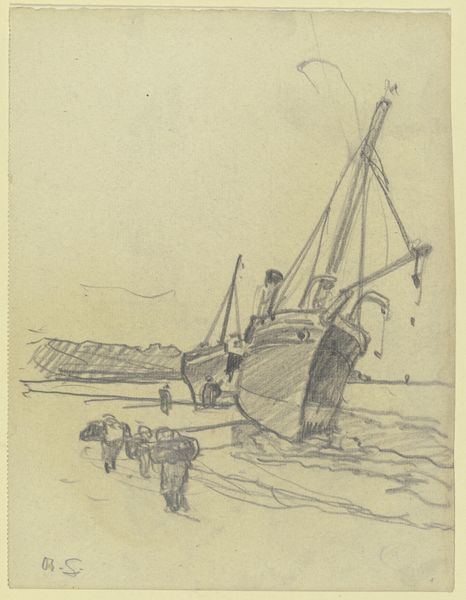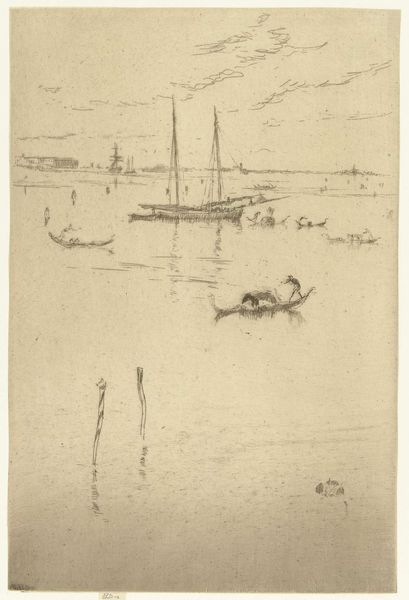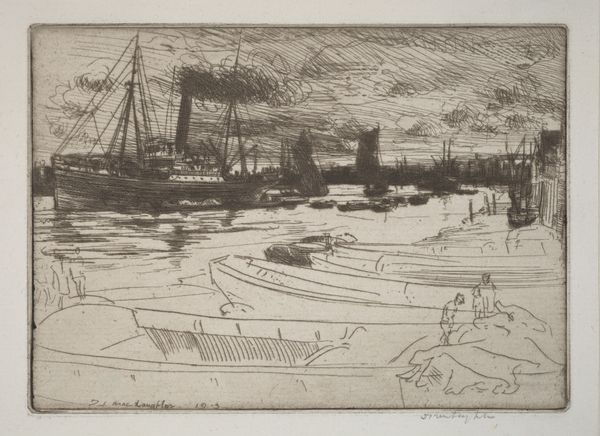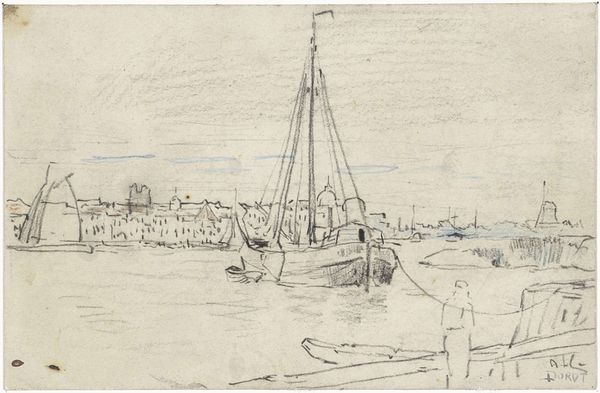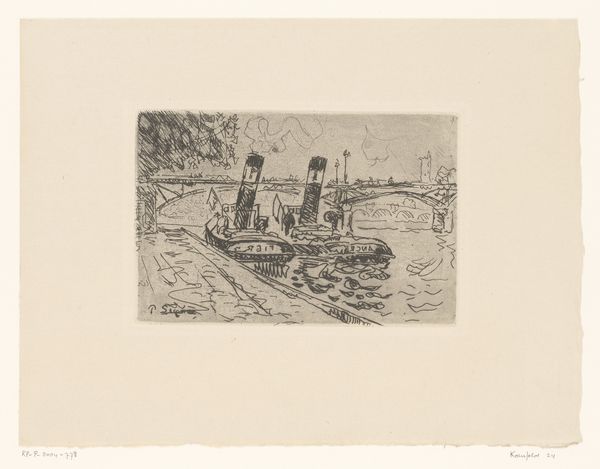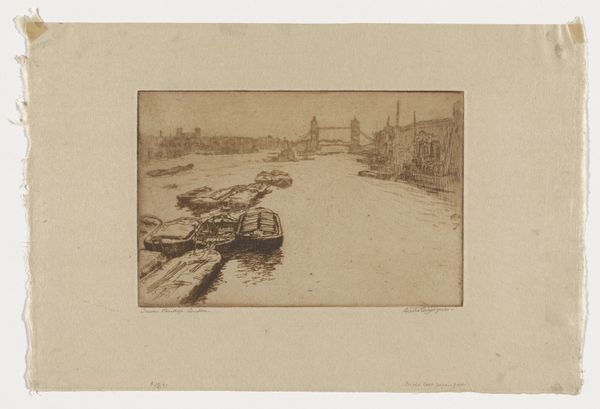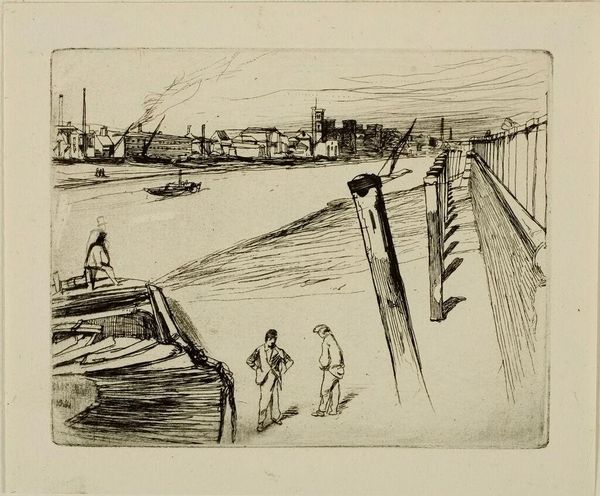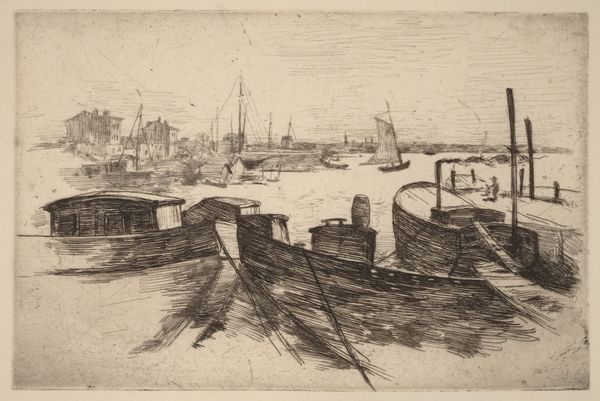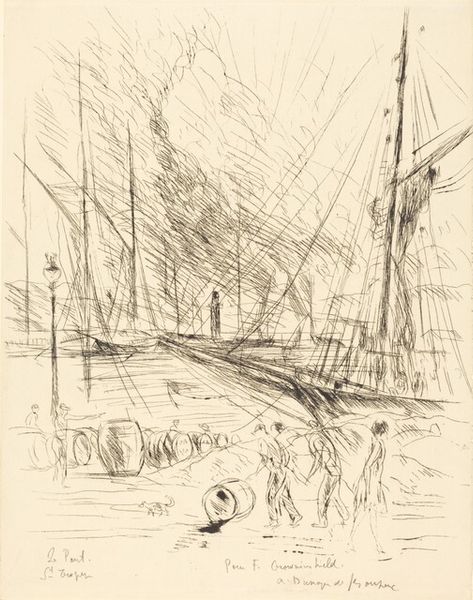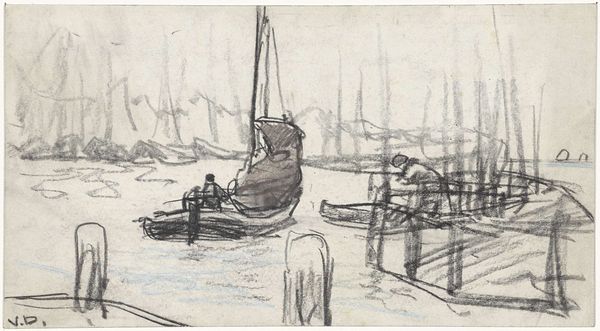
Copyright: National Gallery of Art: CC0 1.0
Curator: Charles Frederick William Mielatz, a fascinating figure, created this etching, titled "New York from the Harbor," around 1905. It's a fairly straightforward print. What's your initial read? Editor: I find it remarkably calm. There's a bustling cityscape in the background, yet the foreground figures exude tranquility. It’s an interesting juxtaposition. Almost an indictment on class divide within a budding society. Curator: An interesting point of view. Mielatz was quite interested in capturing the essence of New York. Given that it’s an etching, mass production was possible. Etchings and other graphic media were central to fostering a national artistic identity at this time, circulating images and shaping perspectives about the city. Editor: Right. And that's where things get complex. Whose New York is he presenting? These figures on the docks…they’re presented as almost oblivious to the burgeoning wealth in the background. They feel posed but somehow out of sync. Mielatz doesn't seem to question or criticize; is this complicity or is he just neutral? Curator: Well, Mielatz often depicted scenes of everyday life, aiming to show the reality of the time without necessarily passing judgement. His work was collected and championed by various art institutions keen to record this American life, you see. He focused primarily on realistic form, showing, but never critiquing. Editor: Perhaps...but this "reality" has to be unpacked, right? He presents this scene without questioning what’s driving this harbor life. The relationship between these two worlds must have consequences, even in this brief scene. What do you make of that relationship? Curator: Perhaps it shows us how much the definition of “American life” has altered since this work was completed. Seeing how his rendering might open broader questions around class, labor, and the costs of such progress… I find myself rethinking his choices, here. Editor: Agreed, It's fascinating how a seemingly straightforward piece can open up deeper social inquiries when viewed critically. The print's realism ironically throws so many questions up into the air, the smokestack, to hang there and linger. Curator: An art of everyday life becoming a case study. Thank you for lending this perspective.
Comments
No comments
Be the first to comment and join the conversation on the ultimate creative platform.
